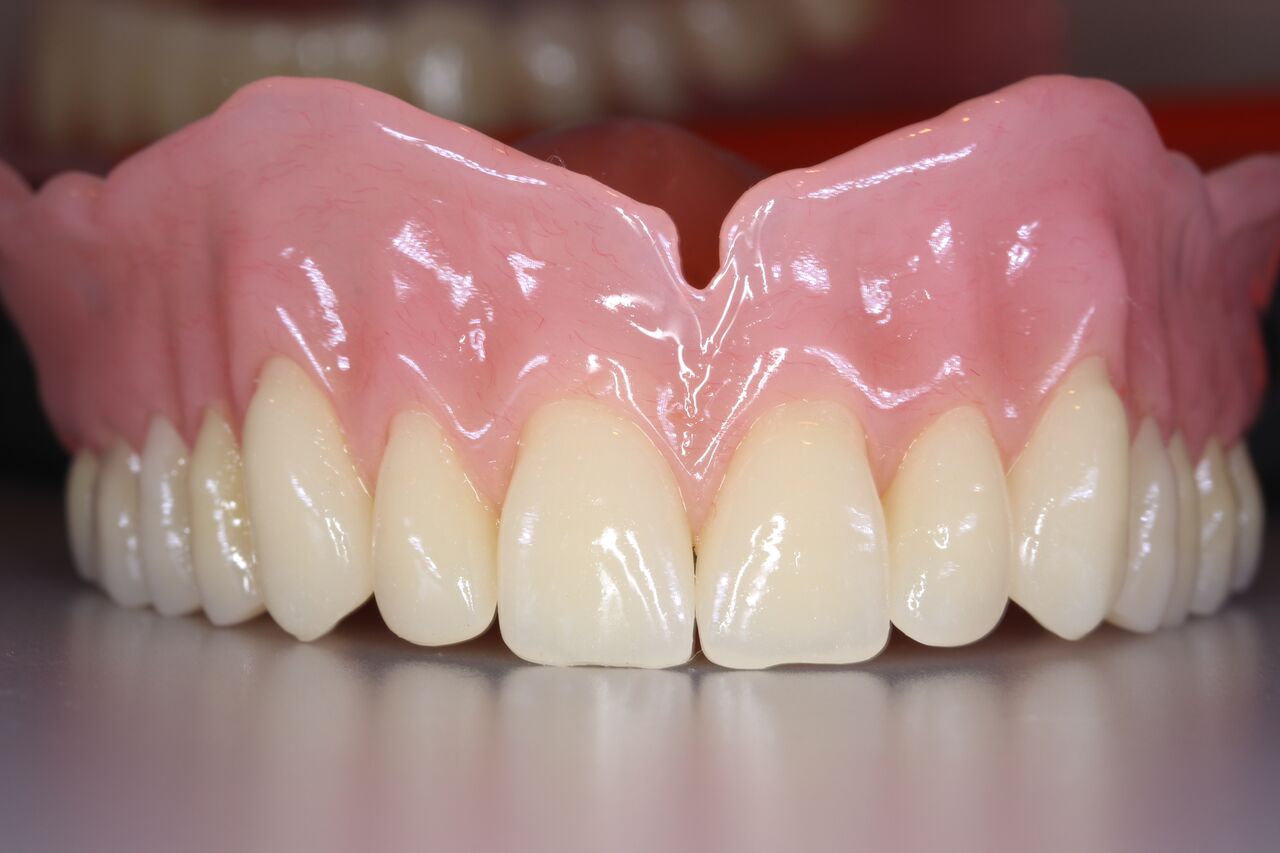When upper dentures become stuck, it can be a frustrating and uncomfortable experience. Fortunately, there are several effective techniques you can employ to safely remove them without causing damage. In this comprehensive guide, we will delve into the various methods and provide step-by-step instructions to help you regain comfort and ease.

Image: www.inhomedentures.ca
Understanding Stuck Dentures: Causes and Prevention
Stuck dentures occur when there is excessive suction between the denture base and the roof of your mouth. This suction is created when the denture is placed correctly and forms a seal, preventing air from entering beneath it. While necessary for proper adhesion, excessive suction can make it challenging to remove the denture.
Several factors can contribute to stuck dentures, including:
- Denture Fit: An ill-fitting denture may not create an optimal seal, leading to excessive suction and difficulty in removal.
- Dry Mouth: Reduced saliva production, a common side effect of certain medications and medical conditions, can increase friction between the denture and tissues.
- Muscle Tension: Tense muscles around the mouth and jaw can put pressure on the denture, causing it to become stuck.
- Warped Denture: Warping or distortion of the denture material can alter its fit and result in suction issues.
To prevent dentures from getting stuck, maintaining a proper fit is crucial. Consult with your dentist regularly for adjustments and ensure the dentures fit snugly without causing discomfort. Keeping the mouth moist with regular sips of water or using saliva substitutes can reduce friction. Relaxation techniques, such as deep breathing or massaging the facial muscles, can help alleviate muscle tension that contributes to stuck dentures.
Step-by-Step Guide to Removing Stuck Upper Dentures
If your upper dentures become stuck, follow these steps to remove them safely:
- Gentle Rocking: Gently rock the denture back and forth along the ridge of your jawbone. Avoid excessive force to prevent damage to the dentures or your tissues.
- Massage the Roof of Your Mouth: Place your index finger on the roof of your mouth, just behind the denture. Gently massage in circular motions to help break the seal.
- Use a Suction Cup: Attach a small suction cup to the center of the denture. Slowly pull upward, creating a vacuum to loosen the dentures.
- Insert a Lubricant: Apply a small amount of petroleum jelly or denture adhesive around the edges of the denture. This helps reduce friction and lubricates the seal.
- Pull Slowly and Firmly: Once the seal is broken, grasp the denture from both sides, near the back, and pull firmly in a downward direction.
- Rinse and Clean: After removing the dentures, rinse your mouth with warm water and gently brush your dentures to remove any adhesive residue.
Additional Tips for Comfortable Denture Removal
In addition to the methods outlined above, consider these additional tips to enhance your denture removal experience:
- Warm Compress: Applying a warm compress to your cheeks for a few minutes can relax the facial muscles and soften any adhesive bonds.
- Denture Removal Aids: Invest in denture removal aids, such as rubber tip pliers or a denture hook, specifically designed to assist in removing dentures without damaging them.
- Patience and Perseverance: Removing stuck dentures requires patience and a gentle approach. Avoid using excessive force, as this can lead to tissue damage or breakage of the dentures.
- Professional Assistance: If you experience persistent difficulty removing your dentures, consult with your dentist. They can assess the fit of your dentures and provide professional guidance on proper removal techniques.

Image: www.123dentist.com
How To Remove Stuck Upper Dentures
Conclusion
Removing stuck upper dentures can be a challenge, but with the right techniques and a gentle approach, it can be accomplished safely and effectively. Remember to maintain proper denture fit, reduce muscle tension, and consult with your dentist regularly to prevent future issues. If you continue to experience difficulties, do not hesitate to seek professional help to ensure the health and comfort of your dentures. By following the steps outlined in this guide, you can regain comfort and enjoy the benefits of your dentures without the frustration of getting them stuck.